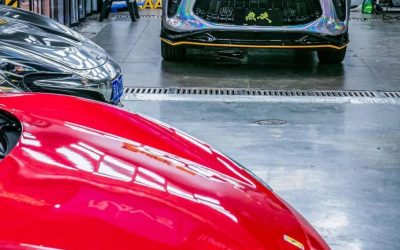Factors Contributing to Higher Fuel Consumption in Some Vehicles at High Speeds


Surprisingly, the most fuel-efficient speed for cars is not 120 km/h but around 80 km/h, where the engine operates within its optimal efficiency range, especially for typical small-displacement turbocharged engines, whose ideal efficiency range is generally below 2000 rpm, approximately 1500 rpm.
Driving at 120 km/h doesn’t require the full 326 kW power output, primarily due to substantial aerodynamic drag, rendering high engine RPM inefficient and leading to increased fuel consumption. Even at 100 km/h, fuel efficiency is considerably better, and going beyond 120 km/h significantly raises fuel consumption.
Although driving at speeds up to 220 km/h might not result in an immediate noticeable drop in fuel levels, safety should be prioritized over fuel efficiency on highways. Driving at slower speeds on highways might be riskier than driving at higher speeds. For instance, the fuel consumption of a GL8 on highways consistently remains around 8 liters per 100 kilometers.
Anecdotal evidence suggests that after 100,000 kilometers, replacing the transmission fluid in a 1.6L Corolla resulted in a 1-liter increase in fuel consumption. Although the driving process remained normal, the engine’s RPM was slightly higher. Whether this is related to the engine oil is unclear, and adjusting to the new transmission fluid might take some time.
Resetting the car computer by disconnecting the car battery may not significantly impact fuel consumption. Vehicle engines have their characteristic efficiency curves, and thermal efficiency is not constant. Optimal speeds for fuel economy generally range between 70-100 km/h.
In urban settings, frequent instances of low-speed or idle driving result in lower energy conversion efficiency, leading to higher fuel consumption. On highways, where the engine typically operates at its highest gear, fuel efficiency is optimized. However, exceeding the vehicle’s designated economic speed can result in increased fuel consumption.
As a vehicle’s speed doubles, the air resistance (drag) increases fourfold, leading to the engine needing more power to overcome the increased air resistance, resulting in higher fuel consumption. Studies indicate that when speeds surpass 200 km/h, air resistance contributes to nearly 85% of the total driving resistance.
The efficiency of a car’s fuel consumption significantly depends on its speed. While it might seem that driving at lower speeds enhances fuel economy, maintaining a constant speed between 50-80 km/h proves to be more fuel-efficient. Driving faster increases air resistance, and after a certain speed, the additional fuel consumption outweighs the gains in speed.
In summary, finding the balance between power and fuel efficiency is essential for a vehicle’s overall performance. Engine efficiency peaks between 1600-1900 rpm. The design of a car’s fuel efficiency is influenced by its speed, and maintaining a steady speed within the ideal range enhances fuel economy. Striking the right balance between power and fuel efficiency is crucial for a vehicle’s optimal performance.











